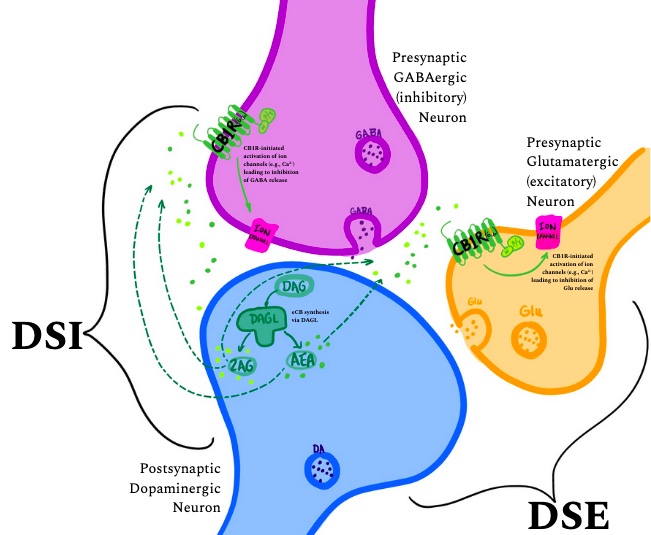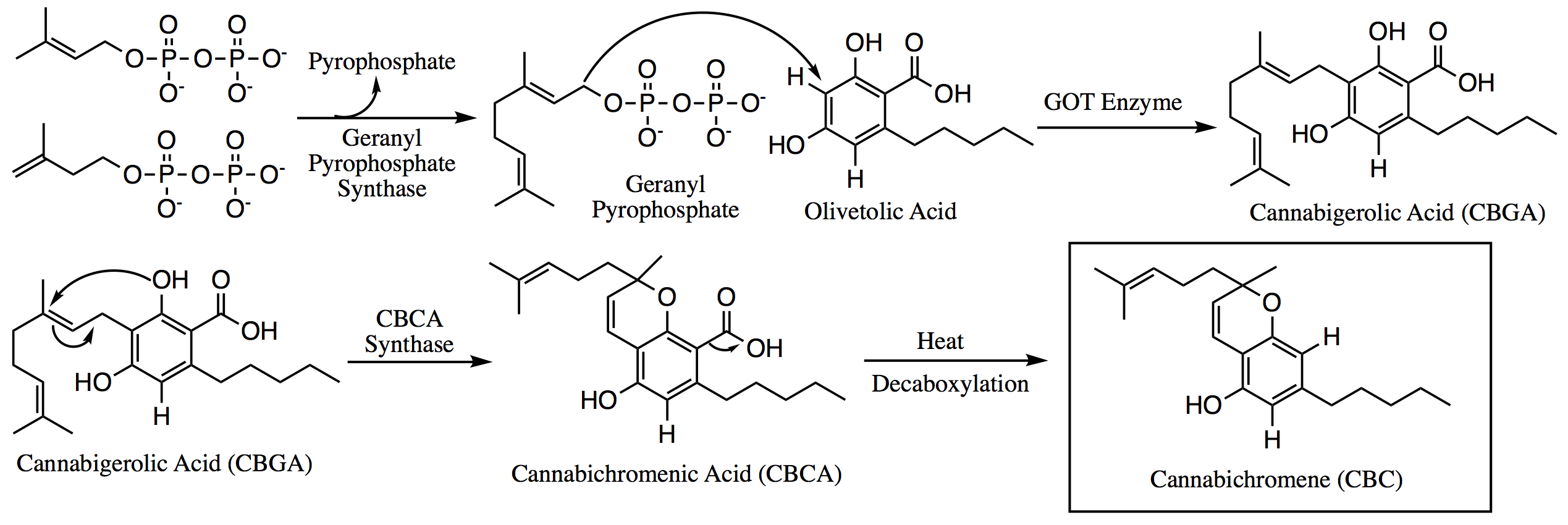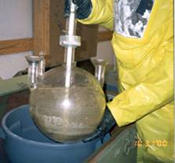|
Cannabicyclol
Cannabicyclol (CBL) is a non-psychoactive cannabinoid found in ''Cannabis''. CBL is a degradative product like cannabinol, with cannabichromene degrading into CBL through natural irradiation or under acid conditions. CBL is not scheduled under the Convention on Psychotropic Substances. See also * Cannabis * Medical cannabis References External links CTD's Cannabicyclol pagefrom the Comparative Toxicogenomics Database The Comparative Toxicogenomics Database (CTD) is a public website and research tool launched in November 2004 that curates scientific data describing relationships between chemicals/drugs, genes/proteins, diseases, taxa, phenotypes, GO annotations, ... Wiley-VCH list of chemicals Phytocannabinoids Hydroxyarenes Benzopyrans Cyclobutanes Cyclopentanes Heterocyclic compounds with 4 rings {{cannabinoid-stub ... [...More Info...] [...Related Items...] OR: [Wikipedia] [Google] [Baidu] |
Medical Cannabis
Medical cannabis, medicinal cannabis or medical marijuana (MMJ) refers to cannabis products and cannabinoid molecules that are prescribed by physicians for their patients. The use of cannabis as medicine has a long history, but has not been as rigorously tested as other medicinal plants due to legal and governmental restrictions, resulting in limited clinical research to define the safety and efficacy of using cannabis to treat diseases. Preliminary evidence has indicated that cannabis might reduce nausea and vomiting during chemotherapy and reduce chronic pain and muscle spasms. Regarding non-inhaled cannabis or cannabinoids, a 2021 review found that it provided little relief against chronic pain and sleep disturbance, and caused several transient adverse effects, such as cognitive impairment, nausea, and drowsiness. Short-term use increases the risk of minor and major adverse effects. Common side effects include dizziness, feeling tired, vomiting, and hallucination ... [...More Info...] [...Related Items...] OR: [Wikipedia] [Google] [Baidu] |
Psychoactive Substance
A psychoactive drug, psychopharmaceutical, mind-altering drug, consciousness-altering drug, psychoactive substance, or psychotropic substance is a chemical substance that alters psychological functioning by modulating central nervous system activity. Psychoactive and psychotropic drugs both affect the brain, with psychotropics sometimes referring to psychiatric drugs or high-abuse substances, while “drug” can have negative connotations. Novel psychoactive substances are designer drugs made to mimic illegal ones and bypass laws. Psychoactive drug use dates back to prehistory for medicinal and consciousness-altering purposes, with evidence of widespread cultural use. Many animals intentionally consume psychoactive substances, and some traditional legends suggest animals first introduced humans to their use. Psychoactive substances are used across cultures for purposes ranging from medicinal and therapeutic treatment of mental disorders and pain, to performance enhancement. T ... [...More Info...] [...Related Items...] OR: [Wikipedia] [Google] [Baidu] |
Cannabinoid
Cannabinoids () are several structural classes of compounds found primarily in the ''Cannabis'' plant or as synthetic compounds. The most notable cannabinoid is the phytocannabinoid tetrahydrocannabinol (THC) (delta-9-THC), the primary psychoactive compound in Cannabis (drug), cannabis. Cannabidiol (CBD) is also a major constituent of temperate cannabis plants and a minor constituent in tropical varieties. At least 100 distinct phytocannabinoids have been isolated from cannabis, although only four (i.e., THCA, CBDA, CBCA and their common precursor CBGA) have been demonstrated to have a biogenetic origin. It was reported in 2020 that phytocannabinoids can be found in other plants such as rhododendron, licorice and liverwort, and earlier in Echinacea. Phytocannabinoids are multi-ring phenolic compounds structurally related to THC, but endocannabinoids are fatty acid derivatives. Nonclassical synthetic cannabinoids (cannabimimetics) include aminoalkylindoles, 1,5-diarylpyrazoles, qu ... [...More Info...] [...Related Items...] OR: [Wikipedia] [Google] [Baidu] |
Cannabis
''Cannabis'' () is a genus of flowering plants in the family Cannabaceae that is widely accepted as being indigenous to and originating from the continent of Asia. However, the number of species is disputed, with as many as three species being recognized: '' Cannabis sativa'', '' C. indica'', and '' C. ruderalis''. Alternatively, ''C. ruderalis'' may be included within ''C. sativa'', or all three may be treated as subspecies of ''C. sativa'', or ''C. sativa'' may be accepted as a single undivided species. The plant is also known as hemp, although this term is usually used to refer only to varieties cultivated for non-drug use. Hemp has long been used for fibre, seeds and their oils, leaves for use as vegetables, and juice. Industrial hemp textile products are made from cannabis plants selected to produce an abundance of fibre. ''Cannabis'' also has a long history of being used for medicinal purposes, and as a recreational drug known by ... [...More Info...] [...Related Items...] OR: [Wikipedia] [Google] [Baidu] |
Cannabinol
Cannabinol (CBN) is a mildly psychoactive phytocannabinoid that acts as a low affinity partial agonist at both CB1 and CB2 receptors. This activity at CB1 and CB2 receptors constitutes interaction of CBN with the endocannabinoid system (ECS). Although CBN shares the same mechanism of action as other phytocannabinoids (e.g., Delta-9-tetrahydrocannabinol, Δ9-THC), it has a lower affinity for CB1 receptors, meaning that much higher doses of CBN are required in order to experience effects, such as mild sedation. It was the first cannabinoid to be isolated from cannabis and was discovered in 1896. Pharmacology Pharmacodynamics Both THC and CBN activate the CB1 (Ki = 211.2 nM) and CB2 (Ki = 126.4 nM) receptors. Each compound acts as a low affinity partial agonist at CB1 receptors with THC demonstrating 5x–10× greater affinity to the CB1 receptor. Like THC, CBN has a higher selectivity for CB2 receptors which are located throughout the central and peripheral nerv ... [...More Info...] [...Related Items...] OR: [Wikipedia] [Google] [Baidu] |
Cannabichromene
Cannabichromene (CBC), also called cannabichrome, cannanbichromene, pentylcannabichromene or cannabinochromene, exhibits anti-inflammatory properties ''in vitro'', which may, theoretically, contribute to cannabis analgesic effects. It is a phytocannabinoid, one of the hundreds of cannabinoids found in the ''Cannabis'' plant. It bears structural similarity to the other natural cannabinoids, including tetrahydrocannabinol (THC), tetrahydrocannabivarin (THCV), cannabidiol (CBD), and cannabinol (CBN), among others. It is not scheduled by the Convention on Psychotropic Substances. Biosynthesis Within the ''Cannabis'' plant, CBC occurs mainly as cannabichromenic acid (CBCA, 2-COOH-CBC, CBC-COOH). Geranyl pyrophosphate and olivetolic acid combine to produce cannabigerolic acid (CBGA; the sole intermediate for all other phytocannabinoids), which is cyclized by the enzyme CBCA synthase to form CBCA. Over time, or when heated above 93 °C, CBCA is decarboxylated, producing CBC. ... [...More Info...] [...Related Items...] OR: [Wikipedia] [Google] [Baidu] |
Convention On Psychotropic Substances
The Convention on Psychotropic Substances of 1971 is a United Nations treaty designed to control psychoactive drugs such as amphetamine-type stimulants, barbiturates, benzodiazepines, and psychedelics signed in Vienna, Austria on 21 February 1971. The Single Convention on Narcotic Drugs of 1961 did not ban the many newly discovered psychotropics, since its scope was limited to drugs with cannabis, coca and opium-like effects. During the 1960s, such drugs became widely available, and government authorities opposed this for numerous reasons, arguing that along with negative health effects, drug use led to lowered moral standards. The Convention, which contains import and export restrictions and other rules aimed at limiting drug use to scientific and medical purposes, came into force on 16 August 1976. As of 2013, 183 member states are Parties to the treaty. The treaty is not self-implementing; individual countries must pass domestic laws to enact punishments and restricti ... [...More Info...] [...Related Items...] OR: [Wikipedia] [Google] [Baidu] |
Cannabis (drug)
Cannabis (), commonly known as marijuana (), weed, pot, and ganja, List of slang names for cannabis, among other names, is a non-chemically uniform psychoactive drug from the ''Cannabis'' plant. Native to Central or South Asia, cannabis has been used as a drug for both recreational and Entheogenic use of cannabis, entheogenic purposes and in various traditional medicines for centuries. Tetrahydrocannabinol (THC) is the main psychoactive component of cannabis, which is one of the 483 known compounds in the plant, including at least 65 other cannabinoids, such as cannabidiol (CBD). Cannabis can be used Cannabis smoking, by smoking, Vaporizer (inhalation device), vaporizing, Cannabis edible, within food, or Tincture of cannabis, as an extract. Cannabis has effects of cannabis, various mental and physical effects, which include euphoria, altered states of mind and Cannabis and time perception, sense of time, difficulty concentrating, Cannabis and memory, impaired short-term memo ... [...More Info...] [...Related Items...] OR: [Wikipedia] [Google] [Baidu] |
Comparative Toxicogenomics Database
The Comparative Toxicogenomics Database (CTD) is a public website and research tool launched in November 2004 that curates scientific data describing relationships between chemicals/drugs, genes/proteins, diseases, taxa, phenotypes, GO annotations, pathways, and interaction modules. The database is maintained by the Department of Biological Sciences at North Carolina State University. Background The Comparative Toxicogenomics Database (CTD) is a public website and research tool that curates scientific data describing relationships between chemicals, genes/proteins, diseases, taxa, phenotypes, GO annotations, pathways, and interaction modules, launched on November 12, 2004. The database is maintained by the Department of Biological Sciences at North Carolina State University. Goals and objectives One of the primary goals of CTD is to advance the understanding of the effects of environmental chemicals on human health on the genetic level, a field called toxicogenomics. The etiolo ... [...More Info...] [...Related Items...] OR: [Wikipedia] [Google] [Baidu] |
Phytocannabinoids
Cannabinoids () are several structural classes of compounds found primarily in the ''Cannabis'' plant or as synthetic compounds. The most notable cannabinoid is the phytocannabinoid tetrahydrocannabinol (THC) (delta-9-THC), the primary psychoactive compound in cannabis. Cannabidiol (CBD) is also a major constituent of temperate cannabis plants and a minor constituent in tropical varieties. At least 100 distinct phytocannabinoids have been isolated from cannabis, although only four (i.e., THCA, CBDA, CBCA and their common precursor CBGA) have been demonstrated to have a biogenetic origin. It was reported in 2020 that phytocannabinoids can be found in other plants such as rhododendron, licorice and liverwort, and earlier in Echinacea. Phytocannabinoids are multi-ring phenolic compounds structurally related to THC, but endocannabinoids are fatty acid derivatives. Nonclassical synthetic cannabinoids (cannabimimetics) include aminoalkylindoles, 1,5-diarylpyrazoles, quinolines, and ... [...More Info...] [...Related Items...] OR: [Wikipedia] [Google] [Baidu] |
Hydroxyarenes
Phenol (also known as carbolic acid, phenolic acid, or benzenol) is an aromatic organic compound with the molecular formula . It is a white crystalline solid that is volatile and can catch fire. The molecule consists of a phenyl group () bonded to a hydroxy group (). Mildly acidic, it requires careful handling because it can cause chemical burns. It is acutely toxic and is considered a health hazard. Phenol was first extracted from coal tar, but today is produced on a large scale (about 7 million tonnes a year) from petroleum-derived feedstocks. It is an important industrial commodity as a precursor to many materials and useful compounds, and is a liquid when manufactured. It is primarily used to synthesize plastics and related materials. Phenol and its chemical derivatives are essential for production of polycarbonates, epoxies, explosives such as picric acid, Bakelite, nylon, detergents, herbicides such as phenoxy herbicides, and numerous pharmaceutical dru ... [...More Info...] [...Related Items...] OR: [Wikipedia] [Google] [Baidu] |
Benzopyrans
4H-1-Benzopyran is an organic compound with the formula . It is one of two isomers of benzopyran, the other being 2H-1-benzopyran, which is more prevalent. It can be viewed as the fusion of a benzene ring to a heterocyclic pyran ring. Some benzopyrans have shown anticancerous activity '' in vitro''. The radical form of benzopyran is paramagnetic. The unpaired electron is delocalized over the whole benzopyran molecule, rendering it less reactive than one would expect otherwise. A similar example is the cyclopentadienyl radical. Commonly, benzopyran is encountered in the reduced state, in which it is partially saturated with one hydrogen atom, introducing a tetrahedral CH2 group in the pyran ring. Therefore, there are many structural isomers owing to the multiple possible positions of the oxygen atom and the tetrahedral carbon atom: Nomenclature According to current IUPAC The International Union of Pure and Applied Chemistry (IUPAC ) is an international federatio ... [...More Info...] [...Related Items...] OR: [Wikipedia] [Google] [Baidu] |








